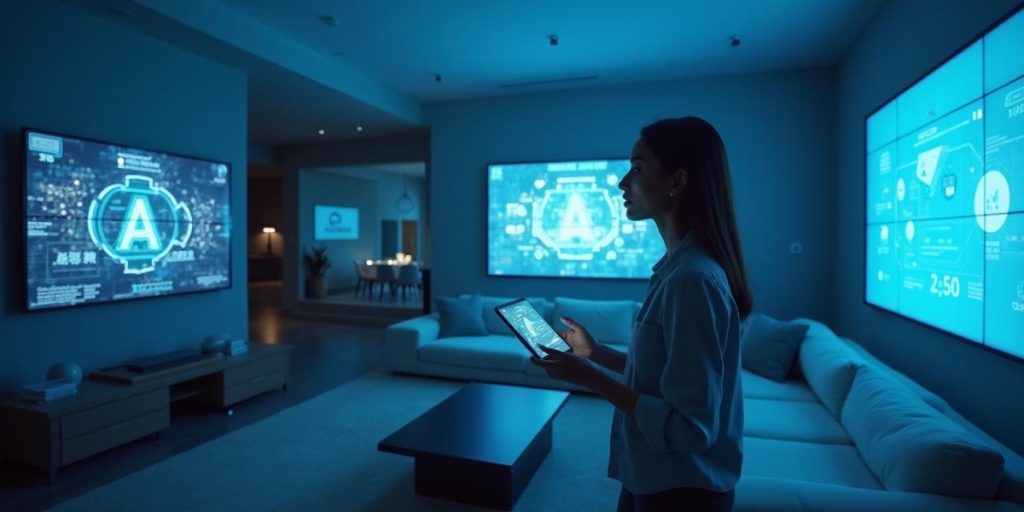In recent years, the retail landscape has undergone a significant transformation, largely driven by technological advancements. One of the most exciting developments is the integration of Augmented Reality (AR) into shopping experiences. This innovative technology allows consumers to visualize products in their own environment before making a purchase, bridging the gap between online and offline shopping. As AR continues to evolve, it is reshaping how we interact with brands and products, making shopping not just a transaction, but an engaging experience.
In this article, we will explore the various ways Augmented Reality is revolutionizing the shopping experience. From virtual try-ons that allow customers to see how clothing fits without stepping into a fitting room, to interactive displays that provide additional product information at the touch of a button, AR is enhancing customer engagement like never before. We will also delve into the impact of AR on consumer behavior, discussing how it influences purchasing decisions and fosters brand loyalty.
Furthermore, we will examine real-world examples of retailers successfully implementing AR technology, showcasing the benefits they have reaped in terms of sales and customer satisfaction. Whether you are a retailer looking to enhance your business strategy or a consumer curious about the future of shopping, this article will provide valuable insights into the transformative power of Augmented Reality. So, read on to discover how AR is not just changing the way we shop, but also enriching our overall shopping experience.
Enhancing Customer Experience with AR
Augmented Reality (AR) has revolutionized the way customers interact with products. By overlaying digital information onto the physical world, AR allows shoppers to visualize products in their own environment before making a purchase. This immersive experience not only enhances customer satisfaction but also reduces the likelihood of returns, as customers can see exactly how a product will fit into their lives.
For instance, furniture retailers like IKEA have developed AR applications that enable users to place virtual furniture in their homes using their smartphones. This feature helps customers make informed decisions, leading to a more personalized shopping experience. As AR technology continues to evolve, we can expect even more innovative applications that will further enhance customer engagement and satisfaction.
AR in E-commerce: Bridging the Gap
The rise of e-commerce has created a need for innovative solutions to bridge the gap between online and offline shopping experiences. Augmented Reality serves as a powerful tool in this regard, allowing online shoppers to visualize products in real-time. By integrating AR into their platforms, e-commerce businesses can provide a more interactive and engaging shopping experience.
For example, beauty brands have started using AR to allow customers to virtually try on makeup products. This not only helps customers find the right shades but also increases their confidence in purchasing online. As more retailers adopt AR technology, we can expect a significant shift in how consumers approach online shopping, making it more interactive and enjoyable.
The Role of AR in Retail Marketing
Augmented Reality is not just a tool for enhancing customer experience; it also plays a crucial role in retail marketing strategies. By creating engaging AR campaigns, brands can capture the attention of potential customers and differentiate themselves from competitors. Interactive advertisements that utilize AR can lead to higher engagement rates and increased brand awareness.
For instance, companies can create AR experiences that allow users to interact with their products in unique ways, such as scanning a product to unlock exclusive content or promotions. This innovative approach to marketing not only attracts customers but also fosters brand loyalty, as consumers are more likely to remember and return to brands that offer memorable experiences.
Overcoming Challenges in AR Implementation
While the benefits of Augmented Reality in shopping are clear, there are also challenges that retailers must overcome to successfully implement this technology. One of the primary obstacles is the cost associated with developing AR applications and ensuring they are user-friendly. Retailers must invest in high-quality AR solutions that provide a seamless experience for customers.
Additionally, there is a learning curve for both retailers and consumers when it comes to adopting AR technology. Retailers need to educate their staff and customers on how to use AR features effectively. By addressing these challenges, businesses can unlock the full potential of AR and create a more engaging shopping experience.
Future Trends in Augmented Reality Shopping
The future of shopping is undoubtedly intertwined with Augmented Reality technology. As AR continues to advance, we can expect to see more sophisticated applications that enhance the shopping experience. For instance, the integration of Artificial Intelligence (AI) with AR could lead to personalized shopping experiences tailored to individual preferences and behaviors.
Moreover, advancements in AR hardware, such as smart glasses, could further transform the way consumers shop. Imagine walking through a store and receiving real-time information about products simply by looking at them. This level of convenience and personalization will likely become a standard expectation among consumers, pushing retailers to innovate continuously.
Case Studies: Successful AR Implementations
Several brands have successfully integrated Augmented Reality into their shopping experiences, serving as case studies for others to follow. For example, the furniture retailer Wayfair has developed an AR app that allows customers to visualize how furniture will look in their homes. This innovative approach has led to increased customer engagement and higher conversion rates.
Another notable example is the fashion retailer Zara, which has implemented AR in its stores to create interactive experiences for customers. By using AR technology, Zara has been able to enhance its in-store experience, making shopping more enjoyable and engaging. These case studies highlight the potential of AR to transform shopping and provide valuable insights for retailers looking to adopt this technology.
| Aspect | Description |
|---|---|
| Definition | Augmented Reality (AR) enhances the real-world environment by overlaying digital information, allowing consumers to interact with products in a virtual space. |
| Consumer Experience | AR provides immersive shopping experiences, enabling customers to visualize products in their own environment before making a purchase. |
| Virtual Try-Ons | Retailers use AR to offer virtual fitting rooms, allowing customers to try on clothes, accessories, or makeup virtually, reducing return rates. |
| Product Visualization | AR applications let customers see how furniture or home decor items would look in their space, enhancing decision-making. |
| Increased Engagement | Interactive AR experiences capture consumer attention, leading to higher engagement rates and improved brand loyalty. |
| Data Collection | AR tools can gather data on consumer preferences and behaviors, helping retailers tailor their offerings and marketing strategies. |
| Challenges | Despite its benefits, AR technology faces challenges such as high development costs, the need for consumer education, and varying levels of technology adoption. |
| Future Trends | The future of AR in shopping includes advancements in AI integration, improved hardware, and broader adoption across various retail sectors. |



